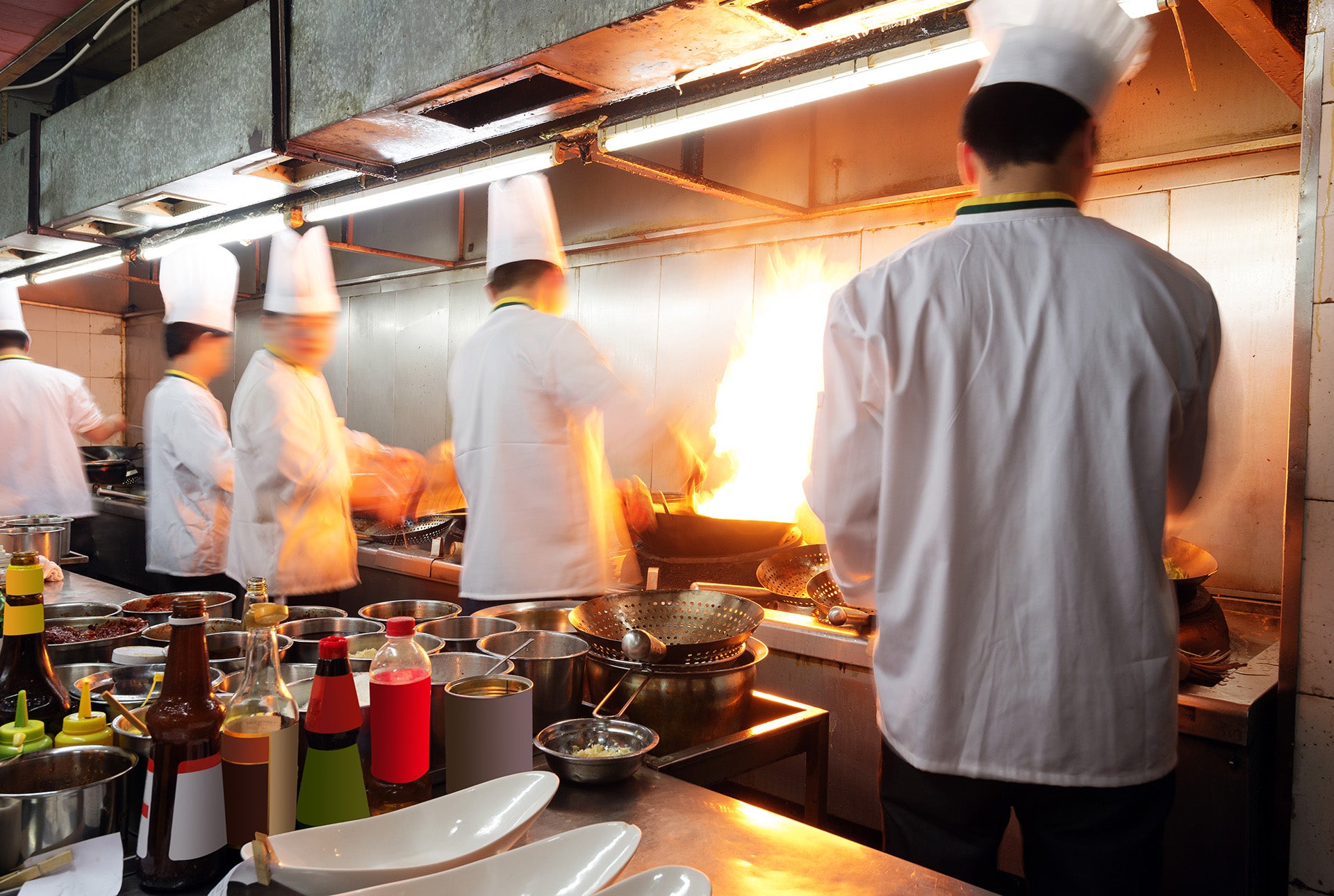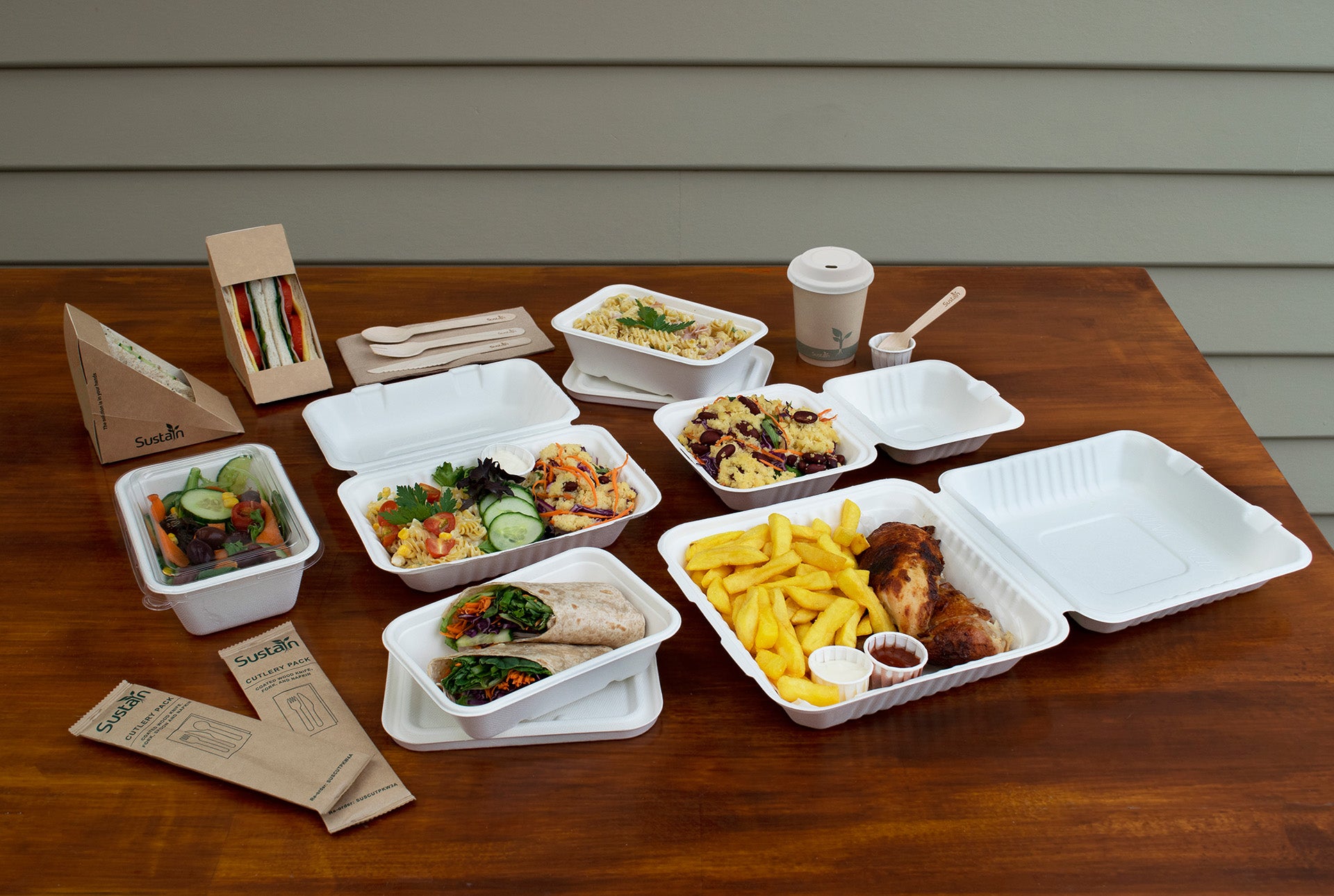Reviewed By Tom Walkerden
As part of the Australia and New Zealand Food Standards Code, cleaning and sanitising is a requirement of food safety standards for Australian food serving businesses. In Australia alone there are 4.7 million cases of food borne illnesses annually. The methods of identifying, evaluating and controlling food safety and risk are laid out in the internationally accepted Hazard Analysis and Critical Control Point (HACCP International) system.
At its essence, HACCP International is about giving practical knowledge to businesses ensuring the way they handle food is safe. HACCP International’s principles are mandatory for most food businesses in Australia, and offer certification for equipment, materials and services based on a food zone classification system. Within this system, each item is evaluated for its suitability of use in the different zones of food-handling facilities. Before we explore the different zones of the kitchen, let’s explore what cleaning and sanitising really is.
What is Cleaning?
In food preparation areas cleaning is the method of removing grease, dirt, food residues, stains and dust from all kitchen equipment, utensils, surfaces and fixtures with detergent and hot water.
What is Sanitising?
Sanitising is the act of killing all bacteria and microorganisms that can cause food poisoning by chemicals or a high-temperature. This process should be completed on all surfaces that have made contact with foods to reduce the risk of spreading infectious diseases.
Six Steps to Effectively Clean and Sanitise in the Food Industry.
Effective cleaning is crucial in food handling, food processing and food service to reduce the risks of cross-contamination, pathogenic microorganisms and allergens from occurring in order to protect public health.
The Government of South Australia has laid out six steps for cleaning and sanitising effectively:- The first step in the cleaning process is the pre-clean. This is done by removing first and food residue and scraps by sweeping, wiping or rinsing with water and scraping.
- The second step is to use warm water and detergent to wash all surfaces, utensils and equipment.
- The next step is to rinse the detergent off all surfaces and equipment.
- The fourth step is to sanitise everything, allowing for the appropriate contact time as recommended by the manufacturer’s instructions, in order to reduce the risk of pathogens and disinfect all utensils/ surfaces.
- Step five is where the final rinse occurs of all surfaces, utensils and equipment if needed.
- The final step is to allow your space to air dry or where necessary by using paper towel or a clean towel.
What are the Food Safety Zones?
The zones cover common items that are used in facilities where food is made. So, FZP (Food Zone Primary) items can be used in the “food zone” – i.e., where food is being prepared – and are suitable for contact with food. These products include disposable gloves, probe thermometers, conveyor belts, piping bags, utensils, cutting boards, baking paper and food-storage containers. FZS (Food Zone Secondary) items can touch food contact surfaces but should not directly touch food. Cleaning cloths and non-woven wipes, scour pads, hard-surface sanitisers, food-packaging labels and washing-up detergent are all examples of FZS items.
There are other classifications too, including SSZ (Splash or Spill Zone) items which can be used in food-handling areas such as kitchens and production and processing areas, but can’t come into contact with food or an item that will touch food. SSZ products include things like floor mats, hand-soap dispensers, light fittings, extraction hoods, mops, floor-surfacing materials and hair nets.
Finally, there’s the NFZ (Non-Food Zone) items, which can be used in and around food-handling facilities and that make a contribution to food safety, but aren’t suitable for use in areas where unpackaged food is handled. Think rodenticides, temperature-monitoring software, laundry equipment and insecticides.
Choosing the Right Cleaning and Sanitising Products
Versatile Wipes
Leading brands, including Kwikmaster, recognise the importance of the HACCP International system. Which is why their range of Versatile Wipes, in regular and heavy-duty versions, meet strict guidelines and are suitable for use in FZS zones. The range is colour coded so you can create a system for what can be used where – for example, you might use red for raw meat prep areas, yellow for fruit/ vegetable prep areas and green for cleaning appliances. This ensures that germs aren’t spread from one surface to another. The range is antibacterial, highly absorbent, strong, economical and machine-washable.
Surface Sanitisers
A good surface sanitiser will kill and reduce any microorganisms across surfaces to a safe level using cationic surfactants (surface active agents) like quaternary ammonium compounds. These compounds should combine bactericidal and virucidal activity (the killing of bacteria and viruses) with strong detergency to ensure an effective general cleaning and sanitisation is occurring.
Disinfectants
When it comes to effective disinfectants, look for the use of components that also have a strong odour control element in the formulation. Quaternary ammonium compounds formulated with surfactants, sequestering agents, water softeners and a biocide will act as a strong disinfectant – as well as a deodorizer to control any bad odours. Biocides is a chemical mixture intended to destroy, deter and exert a controlling effect on harmful organisms.
Degreasers
Grease often describes the build-up of an organic soil which means that it’s best removed with alkaline solutions or bio-based surfactants. The main component of an effective degreaser will be the use of an emulsifying and soil suspension agent that is also mixed with quaternary ammonium compounds. This particular formulation of chemicals makes it easier to clean floors, benches, boat decks and other hard surfaces by effectively cutting through any collections or build-up of organic matter like grease or dirt.
Common Mistakes to Avoid in Food Contact Surface Hygiene
Relying on the Chemicals
A clean and hygiene workplace is not only maintained by effective cleaning chemicals but also by practicing good cleaning methods. Cleaners should make sure that they’re not only wiping down surfaces with the right products, but also in the correct S-formation wipe.
Not Washing Your Hands
No matter how much you clean your area before and after food service, if you don’t wash your hands when food handling you can spread germs and infections.
Using Dirty Water for Cleaning
When cleaning surfaces, utensils and equipment it’s important to use clean water.
Maintain a Clean Kitchen
Avoid every clean being a deep clean by maintaining the cleanliness and sanitation throughout the day. Bunzl Australia and New Zealand’s Key Account Manager for Facilities Management & Government talks about several areas of improvement in cleaning and sanitising, with a key area of focus being the action of “cleaning before disinfecting and sanitising” and how maintaining that system is best to reduce risks of cross contamination.



